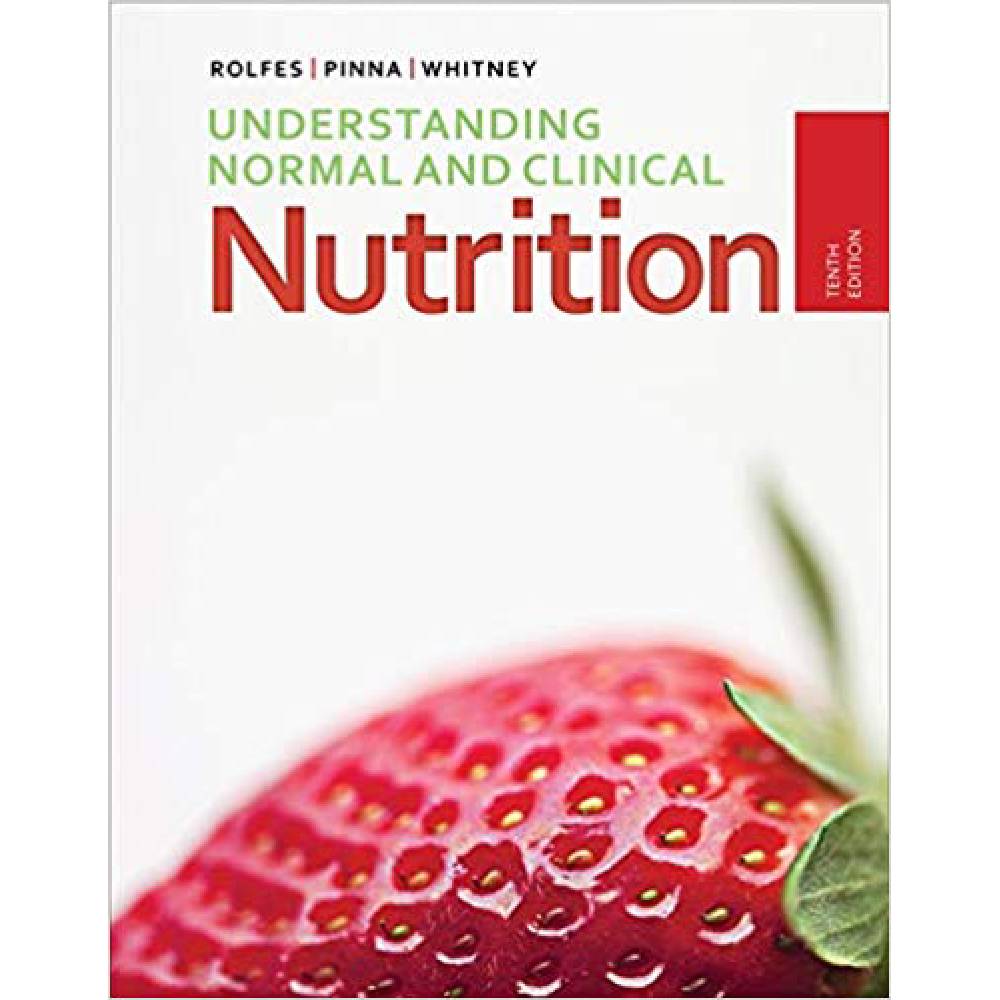Understanding Normal And Clinical Nutrition 10th Edition By Sharon Rady Rolfes – Test Bank
$55.00
Understanding Normal And Clinical Nutrition 10th Edition By Sharon Rady Rolfes – Test Bank
You will receive this product within 24 hours after placing the order
Overview
1. Which of the following is NOT among the features of the fat-soluble vitamins?
a. Require bile for absorption
b. Found in the fat and oily parts of foods
c. Transported permanently to the liver and adipose tissue
d. Pose a greater risk for developing a toxicity than water-soluble vitamins
ANSWER: c
POINTS: 1
REFERENCES: 11.1 Vitamin A and Beta-Carotene
LEARNING OBJECTIVES: UNCN.RPW.10.11.1 – 11.1 – Identify the main roles, deficiency symptoms, and food sources for vitamin A.
KEYWORDS: Bloom’s: Apply
2. What is the major carrier of the fat-soluble vitamins from the intestinal epithelial cell to the circulation?
a. Albumin b. Cholesterol
c. Chylomicrons d. Liposoluble binding proteins
ANSWER: c
POINTS: 1
REFERENCES: 11.1 Vitamin A and Beta-Carotene
LEARNING OBJECTIVES: UNCN.RPW.10.11.1 – 11.1 – Identify the main roles, deficiency symptoms, and food sources for vitamin A.
KEYWORDS: Bloom’s: Remember
3. Which of the following is a property of the fat-soluble vitamins?
a. Most of them are synthesized by intestinal bacteria
b. Intestinal transport occurs by way of the portal circulation
c. Deficiency symptoms may take years to develop on a poor diet
d. Toxicity risk is higher for vitamins E and K than for other fat-soluble vitamins
ANSWER: c
POINTS: 1
REFERENCES: 11.1 Vitamin A and Beta-Carotene
LEARNING OBJECTIVES: UNCN.RPW.10.11.1 – 11.1 – Identify the main roles, deficiency symptoms, and food sources for vitamin A.
KEYWORDS: Bloom’s: Remember
4. If the diet contains precursor vitamin A, which of the following tissues can use it to form vitamin A?
a. Eyes b. Kidneys
c. Adipose cells d. Intestinal cells
ANSWER: d
POINTS: 1
REFERENCES: 11.1 Vitamin A and Beta-Carotene
LEARNING OBJECTIVES: UNCN.RPW.10.11.1 – 11.1 – Identify the main roles, deficiency symptoms, and food sources for vitamin A.
KEYWORDS: Bloom’s: Apply
5. Which of the following food substances can be converted to vitamin A in the body?
a. Tryptophan b. Chlorophyll
c. Xanthophyll d. Beta-carotene
ANSWER: d
POINTS: 1
REFERENCES: 11.1 Vitamin A and Beta-Carotene
LEARNING OBJECTIVES: UNCN.RPW.10.11.1 – 11.1 – Identify the main roles, deficiency symptoms, and food sources for vitamin A.
KEYWORDS: Bloom’s: Remember
6. How many different forms of vitamin A are active in the body?
a. 1 b. 2
c. 3 d. 5
ANSWER: c
POINTS: 1
REFERENCES: 11.1 Vitamin A and Beta-Carotene
LEARNING OBJECTIVES: UNCN.RPW.10.11.1 – 11.1 – Identify the main roles, deficiency symptoms, and food sources for vitamin A.
KEYWORDS: Bloom’s: Remember
7. Which of the following is NOT a form of vitamin A?
a. Retinol b. Retinal
c. Retinoic acid d. Retinoquinone
ANSWER: d
POINTS: 1
REFERENCES: 11.1 Vitamin A and Beta-Carotene
LEARNING OBJECTIVES: UNCN.RPW.10.11.1 – 11.1 – Identify the main roles, deficiency symptoms, and food sources for vitamin A.
KEYWORDS: Bloom’s: Remember
8. Which of the following is responsible for transporting vitamin A from the liver to other tissues?
a. Albumin b. Rhodopsin
c. Retinol-binding protein d. Transcarotenoid protein
ANSWER: c
POINTS: 1
REFERENCES: 11.1 Vitamin A and Beta-Carotene
LEARNING OBJECTIVES: UNCN.RPW.10.11.1 – 11.1 – Identify the main roles, deficiency symptoms, and food sources for vitamin A.
KEYWORDS: Bloom’s: Remember
9. As far as is known, vitamin A does not play an important role in which of the following processes?
a. Blood clotting b. Growth of bones and teeth
c. Synthesis of visual pigment d. Maintaining mucous membranes
ANSWER: a
POINTS: 1
REFERENCES: 11.1 Vitamin A and Beta-Carotene
LEARNING OBJECTIVES: UNCN.RPW.10.11.1 – 11.1 – Identify the main roles, deficiency symptoms, and food sources for vitamin A.
KEYWORDS: Bloom’s: Apply
10. Retinol-binding protein is required to transport vitamin
a. A.
b. E.
c. K.
d. D.
ANSWER: a
POINTS: 1
REFERENCES: 11.1 Vitamin A and Beta-Carotene
LEARNING OBJECTIVES: UNCN.RPW.10.11.1 – 11.1 – Identify the main roles, deficiency symptoms, and food sources for vitamin A.
KEYWORDS: Bloom’s: Remember











Reviews
There are no reviews yet.